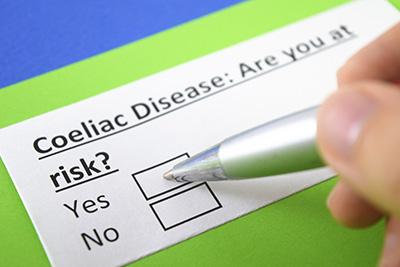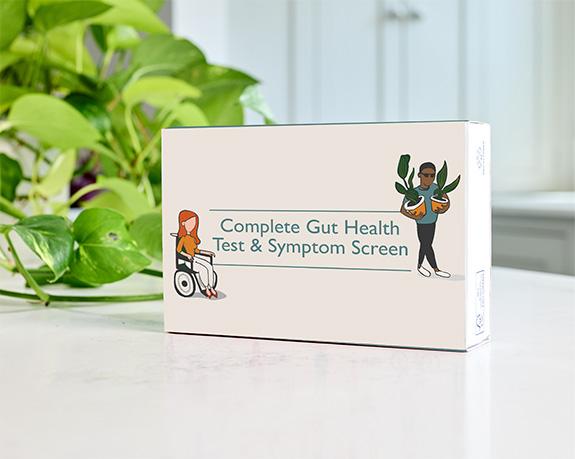Coeliac disease vs gluten intolerance vs wheat allergy - what’re the differences?
Published
Key Article Takeaways
- Common coeliac symptoms are: diarrhoea, vomiting, stomach pain, weight loss, bloating, tiredness, floating stools and headaches.
- More subtle signs of coeliac disease include irregular periods, infertility, weak bones, rashes, anaemia and numbness.
- 1-in-3 people with coeliac disease may not notice any symptoms at all.
- Because the coeliac disease symptoms overlap with other gut conditions, it’s important to take a coeliac disease test to see if you might have it.
When it comes to coeliac disease and gluten, there are a lot of similar terms being used that lead to confusion. You might have seen terms like “gluten intolerance”, “gluten sensitivity”, “non-coeliac wheat sensitivity” or “wheat allergy”. Although there is some overlap between these three conditions they’re all different. Let’s break them down.
What is coeliac disease?
The hallmarks of coeliac disease are inflammation in the bowel and the presence of certain antibodies in the blood.
Coeliac disease is an autoimmune disease triggered by eating gluten. Autoimmune diseases are conditions where the body’s immune system attacks itself. In coeliac disease, a protein called gluten (found in wheat, barley and rye) triggers the body to attack the lining of the gut causing inflammation and symptoms such as stomach pain, bloating, diarrhoea and weight loss. The hallmarks of coeliac disease are inflammation in the bowel and the presence of certain antibodies in the blood.
What is gluten intolerance?
Gluten intolerance is a food “intolerance” which is where eating a food causes symptoms but without any immune reaction. Gluten intolerance is not an autoimmune condition or an allergy. Gluten intolerance is more properly referred to as “non-coeliac gluten sensitivity” or, even better, “non-coeliac wheat sensitivity”.
Non-coeliac wheat sensitivity is a helpful name because it indicates that the condition is not coeliac disease and actually it’s likely to be wheat, (rather gluten specifically) that’s causing symptoms.
Wheat contains a number of substances that may trigger gut symptoms. Firstly, wheat has high levels of FODMAPS. These are carbohydrates that generate gas in the bowel to which some people can be very sensitive. Secondly, wheat contains so-called ATIs (amylase/trypsin inhibitors) which may play a role in causing gut symptoms1.
What is wheat allergy?
Wheat allergy is a typical food allergy where the body produces an allergic response to wheat. Allergy responses are driven by a specific type of antibody class called IgE and usually cause a specific set of symptoms including a raised, red, itchy rash (urticaria or hives), tongue and lip swelling and wheezing or breathing difficulty. Wheat allergy is like peanut allergy or shellfish allergy but the trigger is wheat rather than peanuts or shellfish.

Wheat allergy mainly affects children and most grow out of it with time. It’s strongly linked to other allergic-type (atopic) disease such as eczema and asthma.
What are the differences between coeliac disease, gluten intolerance and wheat allergy?
Now that you’re clued up on what these three separate conditions are we can look at the main differences between them.
Firstly, coeliac disease is an autoimmune disease whereas wheat allergy is a food allergy and gluten intolerance doesn’t involve any immune reaction at all. This means that we can see damage to the bowel in coeliac disease but not in gluten intolerance. Wheat allergy also doesn’t cause “damage” to the bowel but it does cause pretty obvious (usually) rash and swelling in the mouth.
There’s no “test” for gluten intolerance because it doesn’t involve anything in the body we can directly measure.
Secondly, because celiac disease and wheat allergy both trigger the immune system in some way, we can measure this and use it to test for either condition. For example, to diagnose coeliac disease we can test for the presence of some specific antibodies (e.g. anti-tissue transglutaminase IgA antibodies) or we can look at the lining of the small bowel under a microscope. In wheat allergy, we can test for the presence of IgE antibodies against wheat proteins or do skin-prick testing. In contrast, there’s no “test” for gluten intolerance because it doesn’t involve anything in the body we can directly measure.
Lastly, there are differences in how we treat these conditions. The treatment for coeliac disease is to go on a strict gluten-free diet avoiding all foods containing wheat, barley or rye. With wheat allergy, you ideally need to avoid wheat. If you do eat wheat then you’d usually treat the symptoms as for any food allergy with antihistamines, steroids and potentially adrenaline if the reaction was severe. If you have gluten-intolerance or “non-coeliac wheat sensitivity” then avoidance of the triggering foods is important. You may not tolerate wheat but you might be fine with other gluten-containing foods such as barley. You also might find that a small amount of wheat is ok but you get symptoms with larger amounts. It all varies from one person to the next.
There are some other differences between coeliac disease, gluten intolerance and wheat allergy so we’ve put together a table allowing you to easily compare the three conditions.
| Coeliac disease (CD) | Gluten intolerance | Wheat allergy (WA) | |
| Type of condition | Autoimmune | Intolerance - no immune reaction | Classic food allergy |
| How common? | 1-in-100 people | up to 6-in-100 | about 2-in-1000 |
| Who’s affected? | Female > male Commonest in early childhood and then 30-50yrs |
Female > male Any age | Female = male Commoner in children |
| Runs in families? | Yes = more likely to have CD if a close relative has it. | No family link | Yes - more likely to have WA if close family member has allergies. |
| Related to other conditions? | Thyroid disease Type 1 diabetes | Anxiety Depression | Asthma Eczema |
| Commonest symptoms | Diarrhoea Vomiting Bloating Weight loss Stomach pain | Bloating Stomach pain Nausea Headaches “Brain fog” | Hives Lip and tongue swelling Diarrhoea Breathing difficulty |
| Always have symptoms? | No - 30% have no symptoms | Yes - an intolerance is defined by the presence of symptoms | Yes |
| Test | Coeliac antibodies Bowel biopsy | No specific tests | Skin prick tests Wheat-specific IgE |
| Treatment | Strict gluten free diet for life | Reduce wheat in diet | Strict wheat avoidance Antihistamines, steroids |
| Prognosis | Lifelong condition | Can come and go | Most children grow out of it |
Still unsure if you have coeliac disease? Order an at home test now.
Although it’s usually pretty easy to tell if you have wheat allergy, it’s much harder to tell if you have coeliac disease or gluten intolerance. Firstly, the symptoms of gluten intolerance and coeliac disease can be very similar. Secondly, both conditions can be triggered by eating wheat. Thirdly, 1-in-3 with coeliac disease will not even have any symptoms to alert you to a potential problem.
So the key way to figure out whether you have coeliac disease or not is to take a blood test looking for coeliac antibodies. You can use our simple at home kit to send a sample off to our lab and you’ll get your result in days with a doctor’s report explaining if you’re likely to have coeliac disease or not.
Get tips on better health
Sign up to our emails on the better way to better health.
We'll keep you up-to-date with the latest research, expert articles and new ways to get more years of better health.








